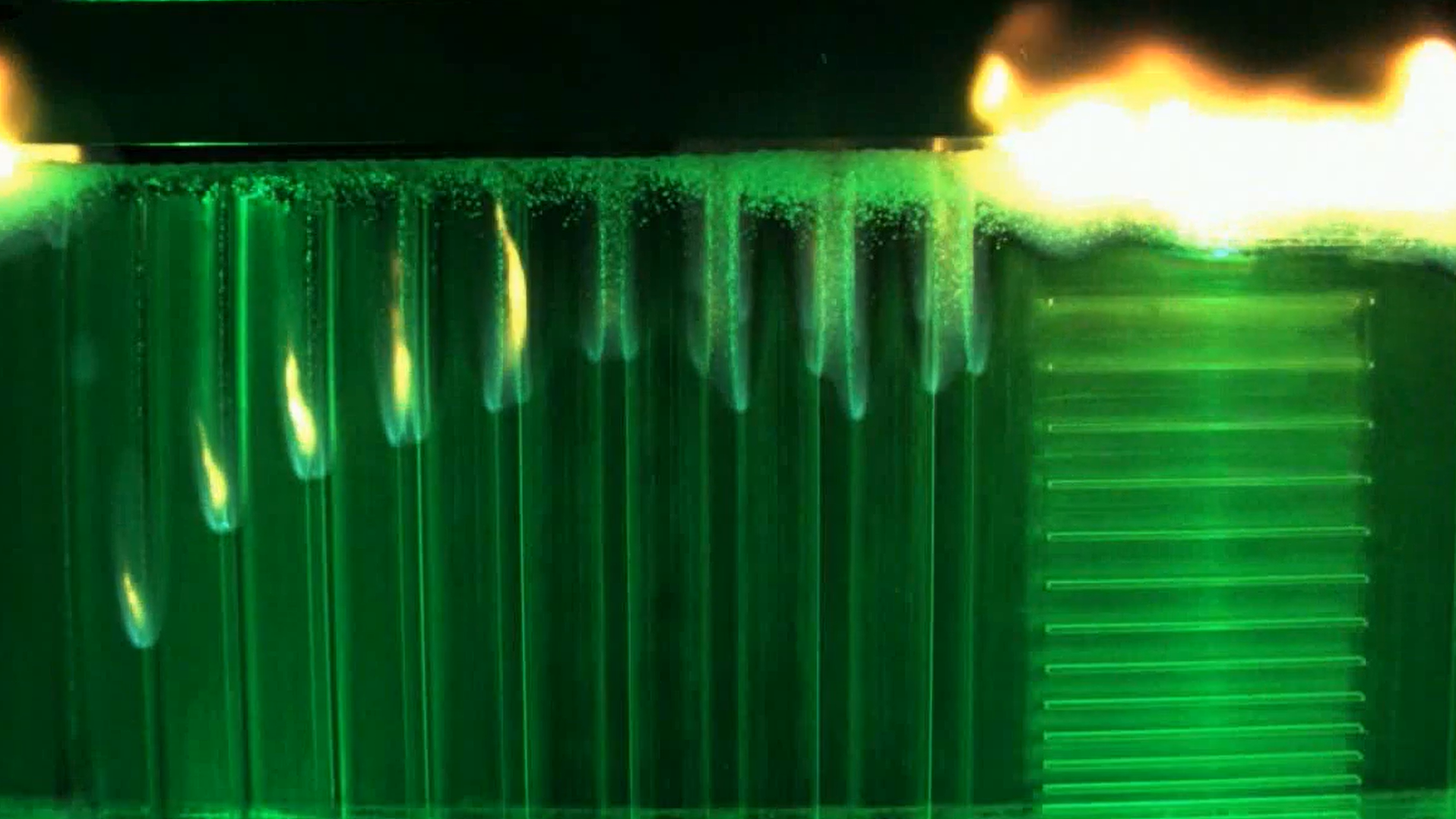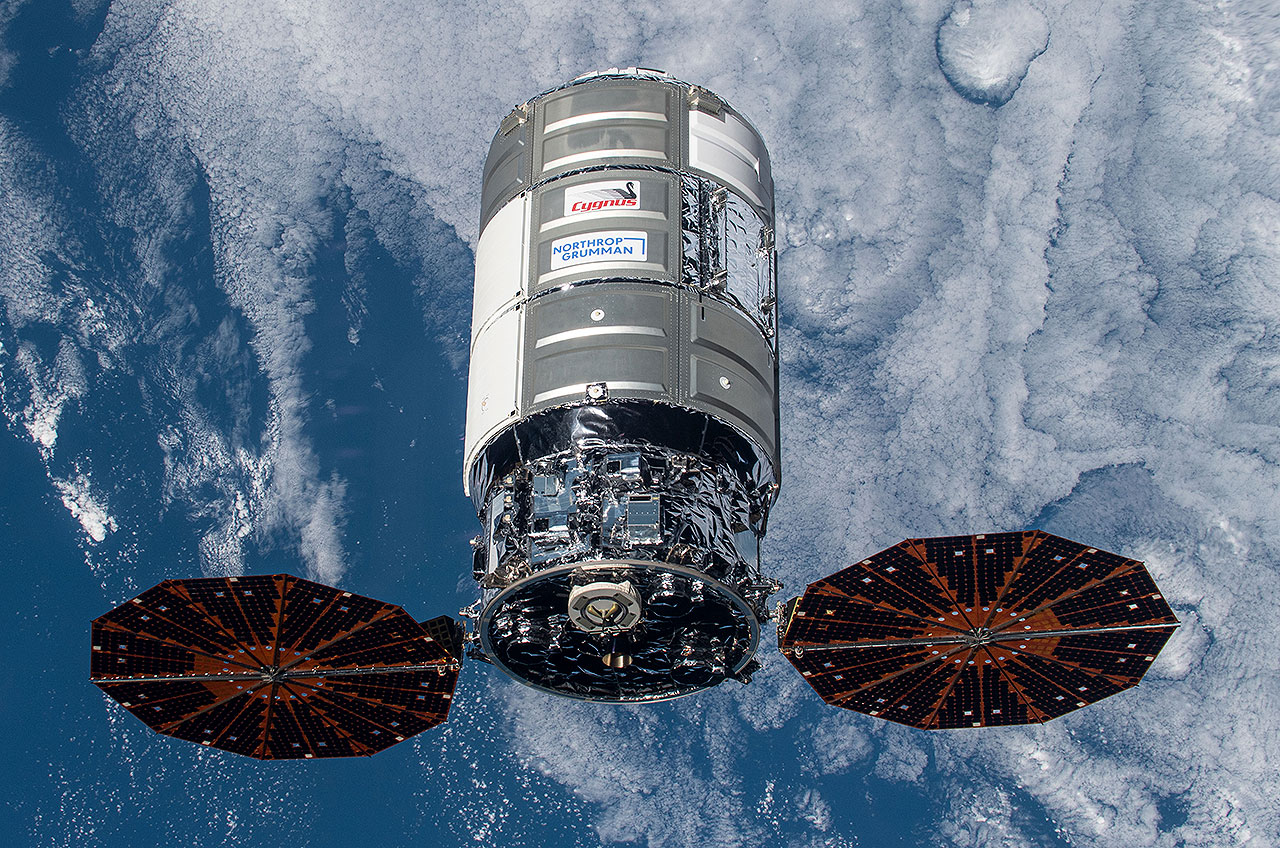Fire-in-space experiment could soon make its way to the moon
'We really need to be on the lunar surface,' said NASA's David Urban.
The next frontier for fire-in-space experiments may be the moon.
The longtime leader of fire experiments on a private International Space Station (ISS) cargo vehicle says he is considering similar work on a robotic moon lander for NASA's Artemis program, which aims to land people and payloads on the lunar surface in the next few years.
"We really need to be on the lunar surface to get long duration," David Urban, fire investigator and chief of the low-gravity exploration technology branch at NASA's Glenn Research Center in Ohio, said in a press conference on Tuesday (July 18).
Urban stressed that the idea is still in the proposal stage. But he hopes to study fire-safety practices on a NASA-funded Commercial Lunar Payload Services (CLPS) robotic moon vehicle. Experiments aboard an Orion astronaut vehicle or NASA's planned lunar Gateway space station, he said, could not last nearly as long.
Related: Watch NASA light a fire on a spaceship on purpose. You know, for science.

Urban leads the Spacecraft Fire Experiment-VI (Saffire-VI) aboard a Northrop Grumman Cygnus freighter, which will launch no earlier than Aug. 1 at 8:30 p.m. EDT (0030 GMT Aug. 2) atop an Antares rocket.
The Cygnus will fly to the ISS with a suite of science gear and supplies from NASA's Wallops Flight Facility in Virginia. You can watch the liftoff live here at Space.com, via NASA Television, when the time comes.
Get the Space.com Newsletter
Breaking space news, the latest updates on rocket launches, skywatching events and more!
Cygnus will remain docked at the space station for roughly 90 days before departing with the fiery experiment on board, en route to its planned destruction in Earth's atmosphere. Like the five experiments before it, Saffire-VI will only turn on when Cygnus is at a safe distance from the ISS.
The Saffire series has been using Cygnus spacecraft to see how flame grows in material used in crew cabins, to test NASA's material selection processes. (The agency, naturally, wants to keep its astronauts as safe as possible during flight.)
"We want to raise the oxygen concentration of the spacecraft to get near the exploration atmospheres," Urban said of the new experiment, which will require extra bottles of compressed oxygen to achieve that goal.
Experimenters will also test a new "extinguishing strategy" for the materials used "to make sure there is plenty of time (for the fire) to go out," Urban said. This should improve future space safety, he added.

Saffire experiments generally use large samples up to roughly 40 inches (100 centimeters) across, a luxury that's possible because Cygnus carries no astronauts. Video from Saffire is sent to Earth after the tests are finished, which does not allow for real-time adjustments to the experiments, Paul Ferkul, SoFIE project scientist at NASA Glenn, previously told Space.com via e-mail.
SoFIE (Solid Fuel Ignition and Extinction) is another fire investigation; it's installed in the Combustion Investigation Rack, located on the ISS's Destiny module. Unlike Saffire, SoFIE investigators can change parameters such as ignition factors, oxygen, pressure, radiant heating and flow speed during the experiment. But SoFIE uses smaller samples, measuring roughly 4 inches to 12 inches (10 to 30 cm) long, for crew safety reasons.
Ferkul has said his team's experiment will also be beneficial for future moon habitats. "Understanding how flames spread and how materials burn in different environments is crucial for the safety of future astronauts," he noted in a 2022 NASA press release.
Other ISS space-borne fire experiments included the Flame Extinguishment Experiment, or FLEX (which in part was looking at how oxygen influences combustion) and the Advanced Combustion via Microgravity Experiments (ACME), which aimed to reduce emissions from combustion.
NASA's Artemis program aims to put an astronaut crew on the lunar surface during Artemis 3, now scheduled to launch in 2025 or 2026 depending on progress with SpaceX's Starship spacecraft, which will be the mission's lander. The U.S. Federal Aviation Administration is investigating Starship's launch attempt in April that rained concrete and other debris around the launch site in coastal Texas.
The Artemis 1 mission flew around the moon uncrewed in late 2022 on a successful test of Orion and NASA's Space Launch System rocket. Artemis 2 will send four astronauts — NASA's Reid Wiseman, Victor Glover and Christina Koch and Canadian Jeremy Hansen — around the moon no earlier than November 2024.
NASA and its international Artemis partners also plan to put scientific payloads, landers and rovers on the moon's surface via the CLPS program.
Other experiments and payloads launching to the ISS aboard the Cygnus NG-19 mission on Aug. 1 include:
- Neuronix, an ISS National Lab experiment that "demonstrates the formation of 3D neuron cell cultures in microgravity, and tests a neuron-specific gene therapy," according to NASA officials. Results may help develop drugs or other therapies for folks with paralysis and neurological diseases, such as Alzheimer's and Parkinson's.
- Multi Needle Langmuir Probe a European Space Agency experiment that "monitors plasma densities in the ionosphere — where Earth's atmosphere meets space." The results may improve accuracy for GPS systems, which can be disturbed by concentrations of the superheated gas induced by solar activity.
- Exploration PWD, a water-sanitation processor that "uses advanced water sanitization and microbial growth reduction methods, and dispenses hot water."
- I-Space Essay, a JAXA (Japan Aerospace Exploration Agency) memory card "that contains digital works created by students, such as pictures and poetry, to the space station." More than 13,000 students in 74 schools participated..
Join our Space Forums to keep talking space on the latest missions, night sky and more! And if you have a news tip, correction or comment, let us know at: community@space.com.

Elizabeth Howell (she/her), Ph.D., was a staff writer in the spaceflight channel between 2022 and 2024 specializing in Canadian space news. She was contributing writer for Space.com for 10 years from 2012 to 2024. Elizabeth's reporting includes multiple exclusives with the White House, leading world coverage about a lost-and-found space tomato on the International Space Station, witnessing five human spaceflight launches on two continents, flying parabolic, working inside a spacesuit, and participating in a simulated Mars mission. Her latest book, "Why Am I Taller?" (ECW Press, 2022) is co-written with astronaut Dave Williams.









